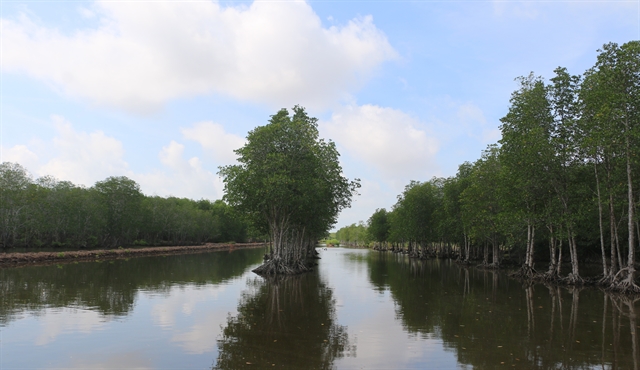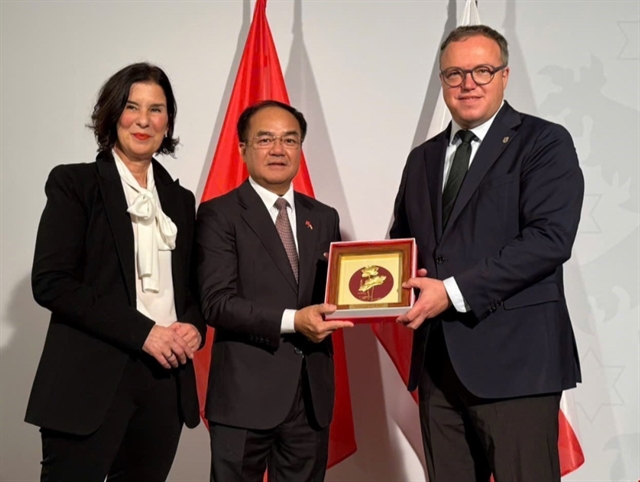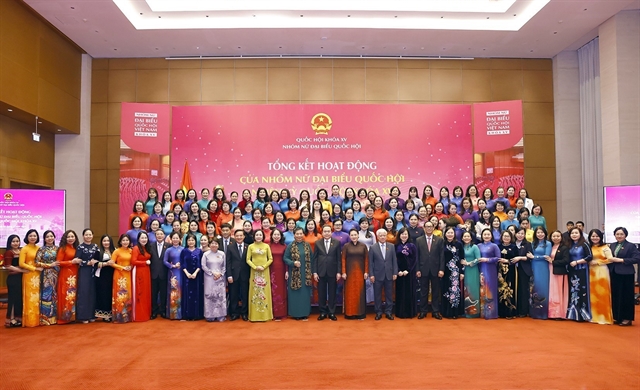 Environment
Environment

Nearly 90 per cent of the country’s urban sewage is discharged untreated directly into waterways, according to a report by the Ministry of Construction.

|
| Untreated wastewater and garbage discharged by households and businesses directly into streams and rivers in the southern city of Cà Mau have led to blockages. — VNA/VNS Photo Kim Há |
HÀ NỘI — Nearly 90 per cent of Việt Nam's urban sewage is discharged untreated directly into its rivers and streams, according to a report by the Ministry of Construction.
The report also revealed alarming figures for the Việt Nam’s two biggest cities – Hà Nội and HCM City – regarding the handling of household sewage from millions of residents.
The capital city currently has six wastewater treatment plants. They include the Kim Liên plant with a capacity of 3,700cu.m per day, Trúc Bạch with 2,300cu.m, Bảy Mẫu with 13,300cu.m, Bắc Thăng Long-Vân Trì with 42,000cu.m and the largest one, Yên Sở, is able to process about 200,000cu.m of wastewater a day.
The plants, however, only managed to filter 22 per cent of the total sewage discharged every day in the city, while the remaining 78 per cent went straight from houses and restaurants to the environment.
Hà Nội People’s Committee said in its own report that the construction of new wastewater treatment plants was seriously behind schedule.
It also admitted difficulties in realising the Master Planning on Drainage in Hà Nội by 2030. According to the master planning, which was signed in 2013, up to 90 per cent of the city’s population would have their sewage collected and treated by 2030 and the rate was due to reach 100 per cent by 2050.
Capital shortage was the main concern of the city authorities. Several priority projects were still on paper, said the Hà Nội People’s Committee, as building a sewage system required a tremendous sum of money from the city’s already strained budget. Meanwhile, there were certain obstacles to call for funding from the private sector.
In the south, HCM City had around 21 per cent of urban sewage water treated – a similar percentage to Hà Nội’s.
There were three wastewater plants currently running in the city with total capacity reaching 302,000 cubic metres – equal to just a fifth of the sewage discharged across the city every day, which was estimated at 1.57 million cubic metres.
They were Bình Hưng plant capable of handling 141,000cu.m, Bình Hưng Hòa with 30,000 cu.m and Tham Lương-Bến Cát with 131,000cu.m.
The city was supposed to build seven sewage treatment plants according to a city drainage plan between 2016 and 2020.
When those new plants are completed and start operating, up to 1.4 million cu.m will be filtered daily, accounting for over 90 per cent of the total city’s discharged wastewater.
That scenario, however, was not likely to happen soon as all seven plant projects were still calling for investors.
Can’t keep up
The director of the construction ministry’s Department of Science & Technology and Environment Vũ Ngọc Anh said that there were 43 urban wastewater treatment plants nationwide with a total capacity of over 926,000cu.m per day.
“The issue lies in how to thoroughly connect the sewer system to collect and handle sewage. This is why the (national) treatment rate is so low, at around 13 per cent,” he told the Thanh Niên newspaper.
Another report on Việt Nam’s urban sewage management by the World Bank agreed with such a low number, saying that only 10 per cent of the country’s total sewage actually went through a treatment plant.
The country was thirsty for investment – estimated at about US$8.3 billion – to build drainage infrastructure for 36 million people living in cities, according to the World Bank’s report.
Head of the Institute of Environmental Science and Engineering, Dr Nguyễn Việt Anh, admitted that the biggest challenge to Việt Nam’s urban drainage was how to connect the household sewers to the citywide network.
“Most of the drainage projects funded by ODA (official development assistance) did not cover that (sewer linkages). And after the project was completed, it was very hard for the authorities or the communities to do the connection work,” Anh said. — VNS




